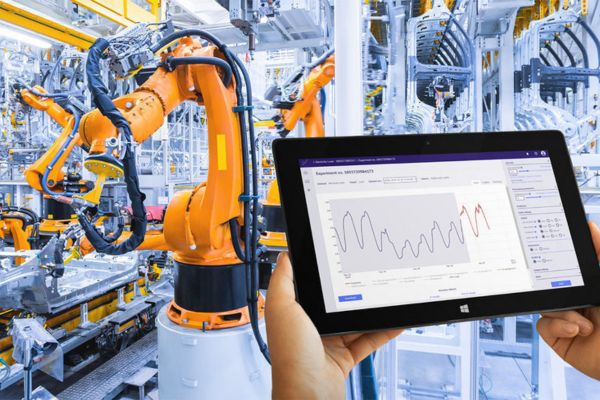As modern industries continue to evolve, the effective utilization of industrial equipment emerges as a parameter of success, with equipment malfunctions posing a substantial threat to productivity and profitability. The optimization and maintenance of industrial machinery is essential in ensuring the smooth operation and growth of enterprises. A data point that stands out is that the global maintenance, repair, and operations (MRO) market commanded an estimated value of $616.01 billion in the year 2020, with maintenance expenditures encompassing a significant share, ranging from 15% to 40% of total production costs.
More recently, Industry 4.0 has steered a new trend, characterized by the widespread adoption of predictive analytics. It leverages historical data, statistical algorithms, and advanced machine learning techniques to predict future outcomes. By scrutinizing historical data related to equipment performance, maintenance activities, and operational usage, predictive analytics identifies patterns and trends that offer early indications of impending equipment failures or the need for maintenance. This proactive capability allows businesses to schedule maintenance and repairs preemptively, thereby reducing downtime and mitigating the exorbitant costs associated with emergency interventions.
The Challenge of Industrial Transformation at Scale
The landscape of industrial transformation confronts a substantial challenge when it comes to scaling proofs of concept (PoCs) and technology demonstrators into comprehensive solutions that can be effectively deployed across multiple plants. Although a multitude of technologies can be deployed within manufacturing facilities to address the requirements of the Internet of Things (IoT), data management, and analysis, these technologies often culminate in isolated point solutions that grapple with scalability beyond the PoC stage.
To surmount these challenges and facilitate scalability, forward-thinking businesses are capitalizing on the platform services offered by hyperscaler platforms. These platforms empower companies to construct predictive maintenance solutions that span multiple plants, enabling seamless benchmarking of performance against both internal benchmarks and industry standards. The advantages of embracing platforms such as AWS (Amazon Web Services) are manifold:
- Scalability: AWS platform services adeptly manage substantial data volumes from a myriad of sources, simplifying the comparison and analysis of equipment performance data across a multitude of plants or locations.
- Cost-effectiveness: AWS platform services play a pivotal role in reducing expenses associated with the storage and processing of extensive equipment performance and maintenance data.
- Real-time Data Analysis: AWS facilitates real-time data acquisition and analysis from Programmable Logic Controllers (PLCs) and plant systems, enabling companies to promptly detect and address operational issues.
- Enhanced Accuracy: By scrutinizing substantial data volumes from diverse sources, the solution furnishes a more precise depiction of equipment Overall Equipment Effectiveness (OEE) metrics, enabling companies to pinpoint areas for enhancement.
- Collaboration: AWS platform services foster seamless data access and collaborative analysis for multiple users across different locations, streamlining teamwork in benchmarking activities.
Accelerating the Digital Transformation of Industrial Equipment
In the pursuit of industrial innovation, businesses have the opportunity to tap into an industrial data fabric solution. The market hosts groundbreaking solutions that amalgamate platform services from AWS and its cutting-edge partners. It enables the sourcing of data from shop floor machinery and enterprise systems while contextualizing this data using an enterprise hierarchy, ultimately yielding a unified view that aligns with the enterprise domain model.
Within this ecosystem, numerous AWS platform services facilitate data management, insights generation, dashboard creation, and the development of digital twins. Key components include:
- AWS Sitewise: This service facilitates the collection of streaming data from Operational Technology (OT) systems, organizing it within the enterprise asset hierarchy.
- AWS Twinmaker: Empowering the creation of 3D visualizations and digital twins, integrated with PLC data and alarms, and feeds this data into time series or Sitewise.
- Quicksight and Managed Grafana: These services empower the creation of operational dashboards, connecting them to ingested or analyzed data.
- Amazon Lookout for Equipment: This service deploys anomaly detection based on models trained with historical data and real-time inference on operational data.
- Amazon Sagemaker: Offering a range of AI/ML algorithms, this service enables the creation of models, hyperparameter tuning, and the establishment of inferencing APIs for real-time data analysis.
Significantly, these platform services operate within a no-code/low-code/minimal code paradigm, emphasizing the consumption and integration of services to achieve business objectives. This approach expedites the deployment of use cases, paving the way for the scaling of multiple use cases within the same platform stack.
The industrial data fabric solution is a proven stack of technologies and platform services that can serve as the cornerstone for data collection from both OT and IT systems. By facilitating the development of numerous use cases, this solution holds the potential to become a tool for benchmarking industrial equipment performance. With scalability, cost-effectiveness, real-time data analysis, enhanced accuracy, and collaboration capabilities, hyperscaler technology empowers companies to identify opportunities for improvement and optimize their operations, charting a course to success.
In an era where data driven decisions play a paramount role in defining how business operations can turn more efficient, these platforms are an usher into the future. The transformative capabilities are second to none, and intelligent implementation can pivot industry operations towards greater efficiency and optimal costs. The best time to adopt the solution was yesterday, but the second best is now.















